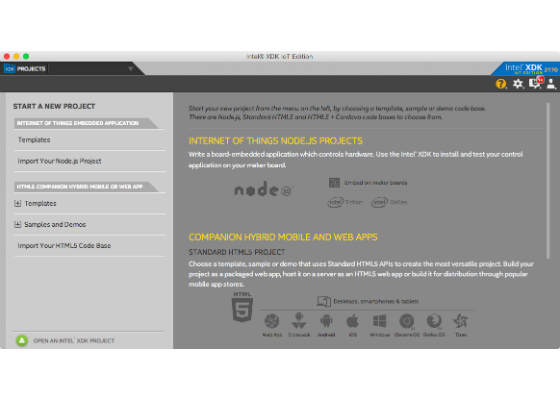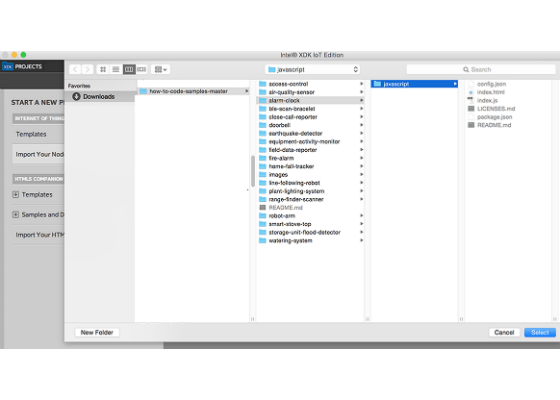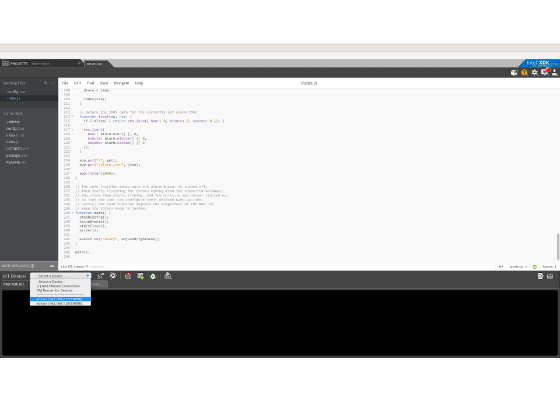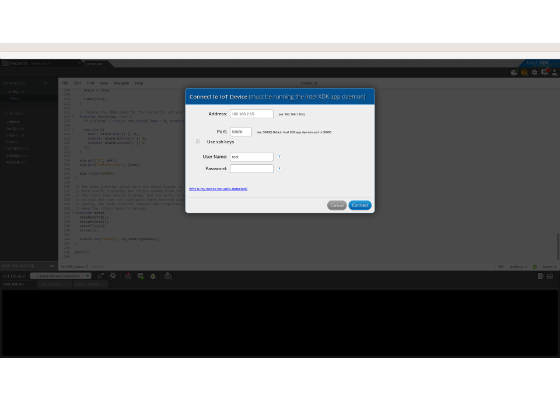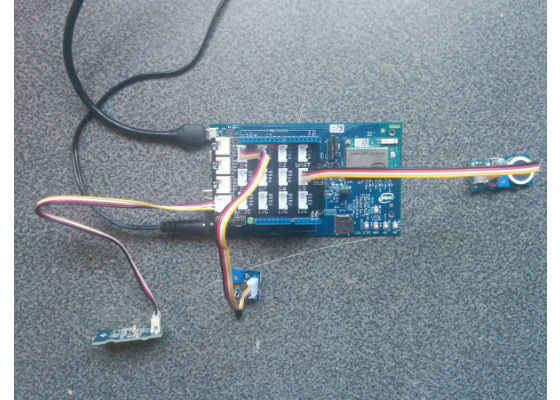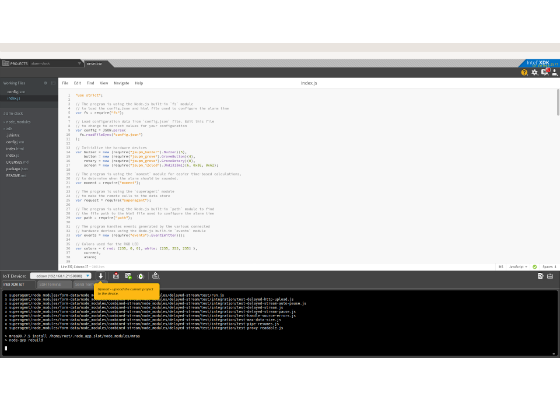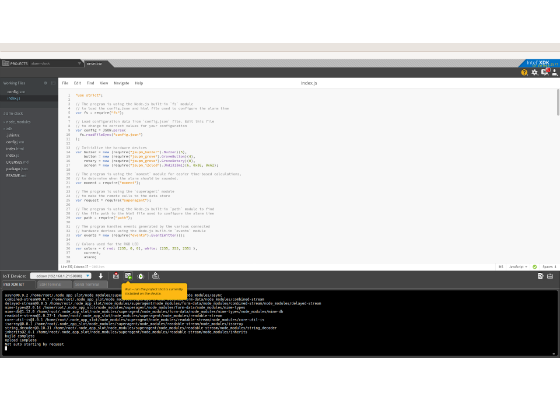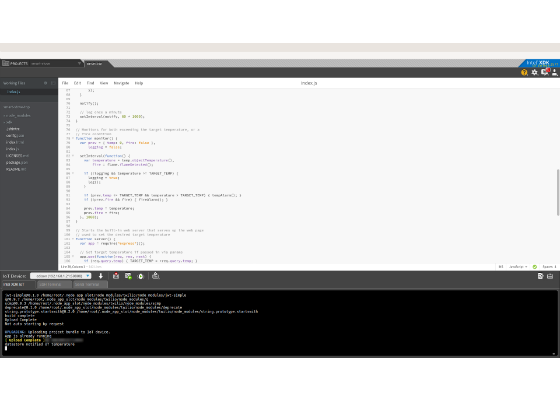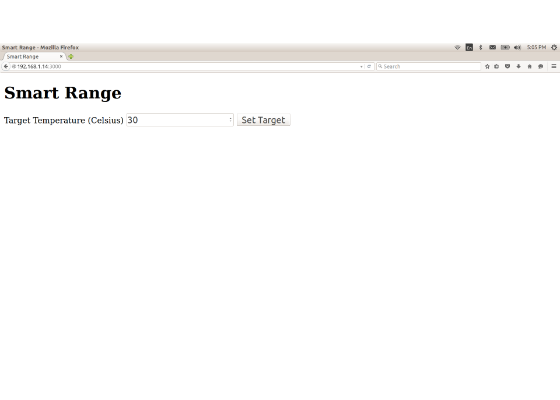How To Intel IoT Code Samples Smart Stove Top
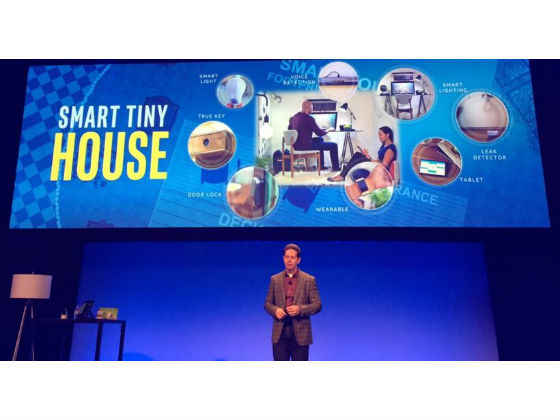
Introduction
This smart stove top application is part of a series of how-to Intel IoT code sample exercises using the Intel® IoT Developer Kit, Intel® Edison development platform, cloud platforms, APIs, and other technologies.
From this exercise, developers will learn how to:
- Connect the Intel® Edison development platform, a computing platform designed for prototyping and producing IoT and wearable computing products.
- Interface with the Intel® Edison platform IO and sensor repository using MRAA and UPM from the Intel® IoT Developer Kit, a complete hardware and software solution to help developers explore the IoT and implement innovative projects.
- Run this code sample in Intel® XDK IoT Edition, an IDE for creating applications that interact with sensors and actuators, enabling a quick start for developing software for the Intel® Edison or Intel® Galileo board.
- Set up a web application server to set the target temperature and store this data using Azure Redis Cache* from Microsoft* Azure*, cloud services for connecting IoT solutions including data analysis, machine learning, and a variety of productivity tools to simplify the process of connecting your sensors to the cloud and getting your IoT project up and running quickly.
What it is
Using an Intel® Edison board, this project lets you create a smart stove top that:
- Allows you to set a target temperature;
- Monitors your stove and notifies you when your set temperature is reached;
- Stores historical temperature data using cloud-based data storage.
How it works
This smart stove top sensor has a number of useful features designed to help you monitor the temperature of the food you are cooking on your legacy stove top. Set the target temperature for a pot on your range top via a web page served directly from Intel® Edison, using your mobile phone. When the target temperature is reached, the speaker issues an audible notification. If an open flame from a pot boiling over is detected, alarm goes off. Optionally, all data can also be stored using the Intel IoT Example Datastore running in your own Microsoft* Azure* account.
Hardware requirements
Grove* Home Automation Kit containing:
1. Intel® Edison with an Arduino* breakout board
2. Grove* IR Temperature Sensor
3. Grove* Flame Sensor
4. Grove* Speaker
Software requirements
1. Intel® XDK IoT Edition
2. Microsoft* Azure* account
How to set up
To begin, clone the How-To Intel IoT Code Samples repository with Git* on your computer as follows:
$ git clone https://github.com/intel-iot-devkit/how-to-code-samples.git
Want to download a .zip file? In your web browser, go to https://github.com/intel-iot-devkit/how-to-code-samples and click the Download ZIP button at the lower right. Once the .zip file is downloaded, uncompress it, and then use the files in the directory for this example.
Adding the program to Intel® XDK IoT Edition
In Intel® XDK IoT Edition, select Import Your Node.js Project:
Then, navigate to the directory where the example project exists, and select it:
You need to connect to your Intel® Edison board from your computer to send code to it.
Click the IoT Device menu at the bottom left. If your Intel® Edison is automatically recognized, select it.
Otherwise, select Add Manual Connection. In the Address field, type 192.168.2.15. In the Port field, type 58888. Click Connect to save your connection.
Installing the program manually on Intel® Edison
Alternatively, you can set up the code manually on the Intel® Edison board.
Clone the How-To Intel IoT Code Samples repository to your Intel® Edison board after you establish an SSH connection to it, as follows:
$ git clone https://github.com/intel-iot-devkit/how-to-code-samples.git
Then, navigate to the directory with this example.
To install Git* on Intel® Edison, if you don’t have it yet, establish an SSH connection to the board and run the following command:
$ opkg install git
Connecting the Grove* sensors
You need to have a Grove* Shield connected to an Arduino*-compatible breakout board to plug all the Grove* devices into the Grove* Shield. Make sure you have the tiny VCC switch on the Grove* Shield set to 5V.
1. Plug one end of a Grove* cable into the Grove* IR Temperature Sensor, and connect the other end to the A0 port on the Grove* Shield.
2. Plug one end of a Grove* cable into the Grove* Flame Sensor, and connect the other end to the D4 port on the Grove* Shield.
3. Plug one end of a Grove* cable into the Grove* Speaker, and connect the other end to the D5 port on the Grove* Shield.
Manual Intel® Edison setup
If you're running this code on your Intel® Edison manually, you need to install some dependencies.
To obtain the Node.js* modules needed for this example to execute on Intel® Edison, run the following command:
npm install
Microsoft* Azure* server setup
Optionally, you can store the data generated by this example program in a backend database deployed using Microsoft* Azure*, Node.js*, and a Redis* data store.
For information on how to set up your own cloud data server, go to:
https://github.com/intel-iot-devkit/intel-iot-examples-datastore
Configuring the example
To configure the example for the optional Microsoft* Azure* data store, change the SERVER andAUTH_TOKEN keys in the config.json file as follows:
{
"SERVER": "http://intel-examples.azurewebsites.net/logger/stove-top",
"AUTH_TOKEN": "s3cr3t"
}
Running the program using Intel® XDK IoT Edition
When you're ready to run the example, make sure you saved all the files.
Click the Upload icon to upload the files to the Intel® Edison board.
Click the Run icon at the bottom of Intel® XDK IoT Edition. This runs the code on Intel® Edison.
If you made changes to the code, click Upload and Run. This runs the latest code with your changes on Intel® Edison.
You will see output similar to the above when the program is running.
Running the program manually
To run the example manually on Intel® Edison, establish an SSH connection to the board and execute the following command:
node index.js
Setting the temperature
The target temperature is set using a single-page web interface served from Intel® Edison while the sample program is running.
The web server runs on port 3000, so if Intel® Edison is connected to Wi-Fi* on 192.168.1.13, the address to browse to if you are on the same network is http://192.168.1.13:3000.
Determining the Intel® Edison IP address
You can determine what IP address Intel® Edison is connected to by running the following command:
ip addr show | grep wlan
You will see the output similar to the following:
3: wlan0: <BROADCAST,MULTICAST,UP,LOWER_UP> mtu 1500 qdisc pfifo_fast qlen 1000
inet 192.168.1.13/24 brd 192.168.1.255 scope global wlan0
The IP address is shown next to inet. In the example above, the IP address is 192.168.1.13.
For a complete list of How-To Intel IoT Code Samples, go to Intel® Developer Zone.
For more details about this code sample, go to GitHub*.
For more such intel IoT resources and tools from Intel, please visit the Intel® Developer Zone
Source: https://software.intel.com/en-us/articles/smart-stove-top

